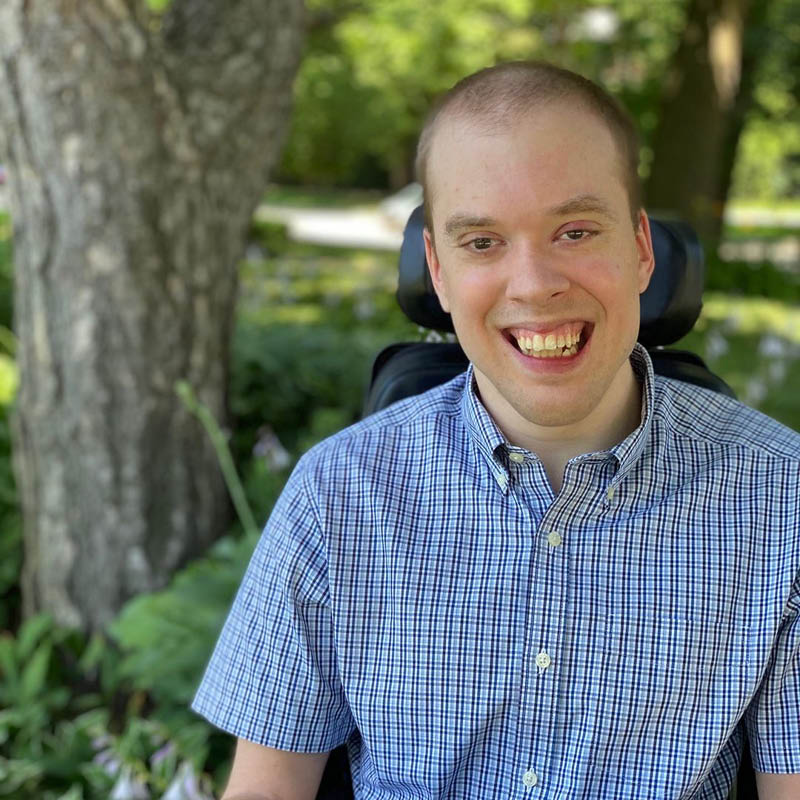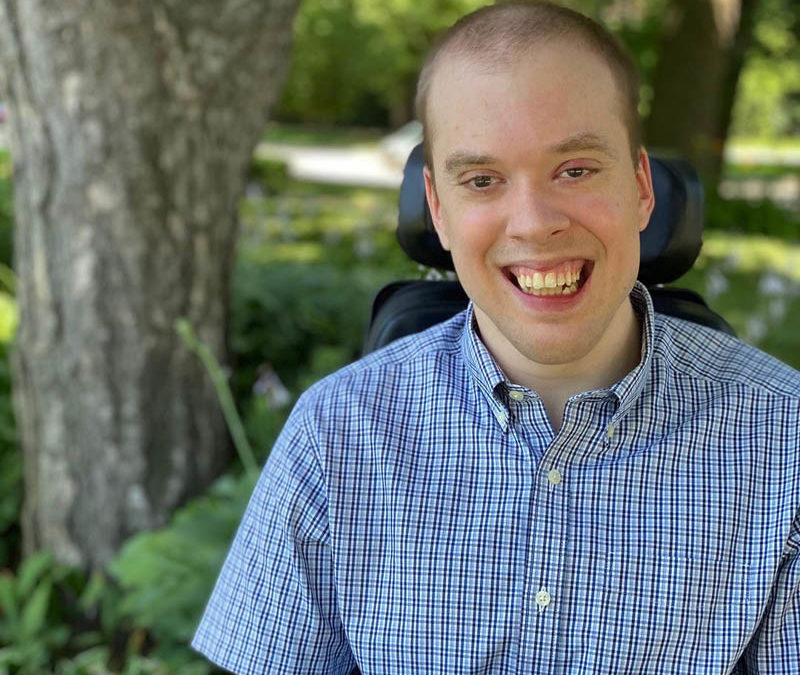Hi everyone! In my first Soundboard post, I reflected on my experience growing up both as a Catholic and as a disabled child and how the Christian disability interpretations did not resonate with my own disabled experience. Next, I shared a perspective you may not have heard before, when I adapted a narrative from the Gospel of Mark and put myself in the shoes of a paralytic who interacts with Jesus. Last time, I shared what I sought to convey from that reflection: most especially the ordinariness, creativity, agency, and interdependence of disability identity.
So what are our usual nondisabled cultural interpretations of disability? You are likely quite familiar with them – actually, we are all immersed in them, even though most of us rarely think of labeling them or saying them aloud. I will highlight three traditional interpretations of disability, adapted from theologian Nancy Eiesland’s groundbreaking work The Disabled God. Notice that each interpretation asserts that the disabled person is not really “one of us,” but is a different form of creation, an “other.”
1. Disability as bad. Here, disability is considered a bad thing to be avoided at all costs, an undesirable stain on the human condition that we wish would go away. It is clear that our society sees disability as bad when one studies the countless disabled movie villains whose disabilities are, without fail, their most identifying characteristics. There is the bumbling yet menacing Captain Hook in Peter Pan, whose silver hook in place of a hand is the defining part of the character’s name and image. And the coldly evil Darth Vader from Star Wars whose difficulty breathing is constantly played up for a dramatically frightening affect. Movies such as Me Before You and Million Dollar Baby sensationalize the physical “burden” of disability with the underlying message that it is better to be dead than live disabled. In our Christian spaces, we likewise perpetuate this belief that disability is bad through our songs and prayers. Despite Jesus’s explicit statement when questioned by the Pharisees about a person’s blindness that “neither he nor his parents sinned” (John 9:3), Christians regularly do assert that blindness is bad, comparing it to “hatred” or “wretchedness” or being “lost.” We regularly ask to be cured of our “deafness” so we can better “hear” God’s voice. We ask not to be “paralyzed” by our fears. It seems that whenever we want to emphasize sin or distance from God, we turn to metaphors that diss bodily difference.
2. Disabled people as special angels. Some people do not view disabled people as punishments, but rather as uniquely “special angels” who suffer with the disability as an example for nondisabled people to overcome their own obstacles. Picture Tiny Tim in a Christmas Carol whose patient, dutiful, disabled suffering softened the hearts of his family and even the hardened Scrooge. This “angel” model is just as harmful as seeing disability as exclusively bad because it calls on disabled people to sacrifice our humanity and personal needs to help nondisabled people overcome their personal obstacles. This model sometimes even implies that our overburdened parents will get their reward in heaven. As activist David Perry asserts, these “disabled angels are not valued in everyday life “except as pets, charity cases or abstract sources of inspiration.”
3. Disabled people as passive objectified “others.” This model also magnifies the differences between disabled and nondisabled people. It “others “and separates disability to the point that the humanity and individuality of disabled people are lost. In not being recognized as societal contributors and fellow humans, disabled people become little more than passive charity objects for the nondisabled people to care for and serve. In this model, the “normal” humans exclusively give, while the passive disabled people exclusively receive. The purpose of the disabled life is to be the path to redemption for the rest of society. Think of the Jerry Lewis telethon where pity-inducing disabled children are paraded across the stage to encourage do-gooders to donate money. Disability activists, such as the late Stella Young call such objectification “inspiration porn.” In this amusing, entertaining, and poignant Ted Talk, Young unpacks the absurdity of this objectification.
One final point about Nancy Eiesland’s work. Her title, The Disabled God, may have taken you aback. Eiesland explores the rarely acknowledged point that the body of the resurrected Jesus was not “fixed’ from the wounds of crucifixion. In his first post-resurrection encounter with his disciples, Jesus freely shows them his still-present wounds.
So, I challenge all of us- can we consistently recognize disabled people, not as bad, not “special angels,” or passive objects of charity but as fellow humans? Can we value disabled people as part of the diversity of humankind: integral pieces of God’s wonderful divine tapestry of beautiful gifts and ordinary imperfections? If so, how can we show this belief in our prayers, reflections, and music? Can we not jump to metaphors that equate physical disability with evil, sin, and waywardness but instead carefully articulate what we truly mean? If Jesus values and affirms a disabled body, so must we.

Image description: A photo of David Gayes, a smiling white man in a wheelchair and blue shirt. Trees are in the background.
David Gayes is a graduate student at Catholic Theological Union in Chicago, working on a masters degree in Intercultural Ministry and delving more deeply into the relationship between disability culture and disability theology. Through writing and dialogue, he invites the GIA community to engage with lived disabled experiences and perspectives in thought-provoking ways. David is also a Disability Lead Fellow, and an active member of St. Nicholas Parish in Evanston, Illinois.


Recent Comments